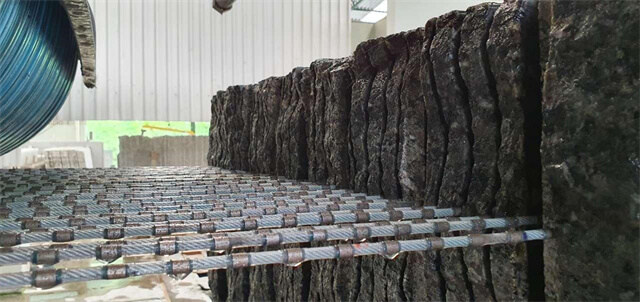Author:Huada Quarrying Machine FROM:Stone quarry machine manufacturer TIME:2024-11-20
When it comes to cutting hard materials, both diamond wire and diamond blades are popular choices in various industries. Each tool has its own set of advantages and specific applications, making them suitable for different tasks. Understanding the differences between these two cutting technologies can help users make informed decisions based on their needs. This article will explore how diamond wire compares to diamond blades in terms of performance, applications, cost-effectiveness, and maintenance.
One of the primary considerations when comparing diamond wire and diamond blades is their cutting performance. Diamond wire saws utilize a thin wire embedded with diamonds, which allows for precision cutting. They excel in cutting complex shapes and intricate designs, making them ideal for applications like stone quarrying and glass fabrication. The flexibility of the wire enables it to navigate curves and angles that blades cannot.
On the other hand, diamond blades are designed for straight cuts and are often more rigid. They are effective for cutting through materials such as concrete, asphalt, and ceramics. While they provide fast cutting speeds, their performance may be limited when it comes to detailed or curved cuts. Overall, for projects requiring high precision and complex geometries, diamond wire may have the edge, whereas diamond blades are preferred for straightforward, high-speed applications.
The applications of diamond wire and diamond blades vary significantly across industries. Diamond wire saws are commonly used in the mining and stone industry for cutting large blocks of granite and marble. Their ability to produce less waste means they are also favored in situations where material conservation is crucial.
In contrast, diamond blades find extensive use in construction and demolition. They are widely used for cutting concrete, brick, and tile due to their robust nature and efficiency. Additionally, diamond blades are often employed in road construction for asphalt cutting. Understanding the specific application requirements can aid in determining which tool is more suitable for a given task.

Cost is always a significant factor in selecting cutting tools. Diamond wire saws tend to have a higher initial investment compared to diamond blades. However, their longevity and reduced material waste often lead to lower operational costs over time. For companies focused on long-term savings and sustainability, investing in diamond wire technology can prove beneficial.
Conversely, diamond blades are less expensive upfront and can be easily replaced. For smaller projects or companies with limited budgets, they may represent a more accessible option. When weighing cost against performance and longevity, businesses must consider their specific needs and the volume of work they handle.
Maintenance plays a crucial role in the longevity and effectiveness of cutting tools. Diamond wire saws require regular tension adjustments and careful handling to prevent breakage. While they can offer exceptional cutting precision, improper maintenance can lead to increased wear and tear.
Diamond blades, while generally easier to maintain, also require attention. Overheating can cause the diamonds to wear down more quickly, reducing the blade's lifespan. Regular cooling and proper use techniques are essential to maximize blade efficiency. Both tools demand a commitment to maintenance, but the specific requirements can differ significantly depending on the user's operational environment.

In today's environmentally conscious marketplace, the ecological impact of cutting tools is increasingly important. Diamond wire saws are known for their efficient cutting processes, which result in less waste of materials. This aspect makes them a more environmentally friendly choice in applications where material conservation is critical.
Diamond blades, while effective, can produce more waste due to their cutting style and the nature of the materials being cut. However, advancements in blade technology are continually reducing environmental footprints. Companies are encouraged to assess not only the effectiveness of their tools but also their environmental impacts when making purchasing decisions.
Flexibility is another crucial factor when comparing diamond wire and diamond blades. Diamond wire saws are inherently versatile; they can be used in various applications across different materials. Their adaptability allows for a range of cutting profiles, making them suitable for complex projects.
Diamond blades, while highly effective for specific tasks, are generally limited to straight cuts. Some specialized blades are available for unique applications, but they do not match the overall versatility of diamond wire saws. Users should consider the range of tasks they need to perform when evaluating their options.

In conclusion, both diamond wire and diamond blades offer unique advantages and are best suited for different applications. Diamond wire saws excel in precision cutting and are ideal for intricate shapes, while diamond blades are favored for their speed and effectiveness in straightforward applications. Cost considerations, maintenance requirements, and environmental impacts also play significant roles in the decision-making process. Ultimately, the choice between diamond wire and diamond blades will depend on specific project needs and budget constraints, requiring careful evaluation to ensure optimal results.